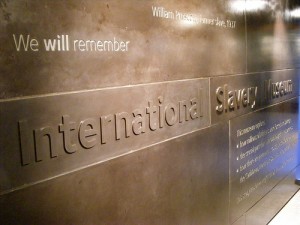Vote for the International Slavery Museum in the The National Lottery Awards
Liverpool’s International Slavery Museum has been shortlisted to win ‘Best Heritage Project’ in the National Lottery Awards along with ten other nominees. The Museum opened in 2007 and was funded by Lottery money. The museum is hugely important – it is the only museum which tells the whole story of slavery, including the continuing impact and legacy of slavery in the present day.
Voting is open until July 10th, so vote now! This is an amazing museum – I went there in 2007 shortly after it opened – so go along too, and show your support in person.




